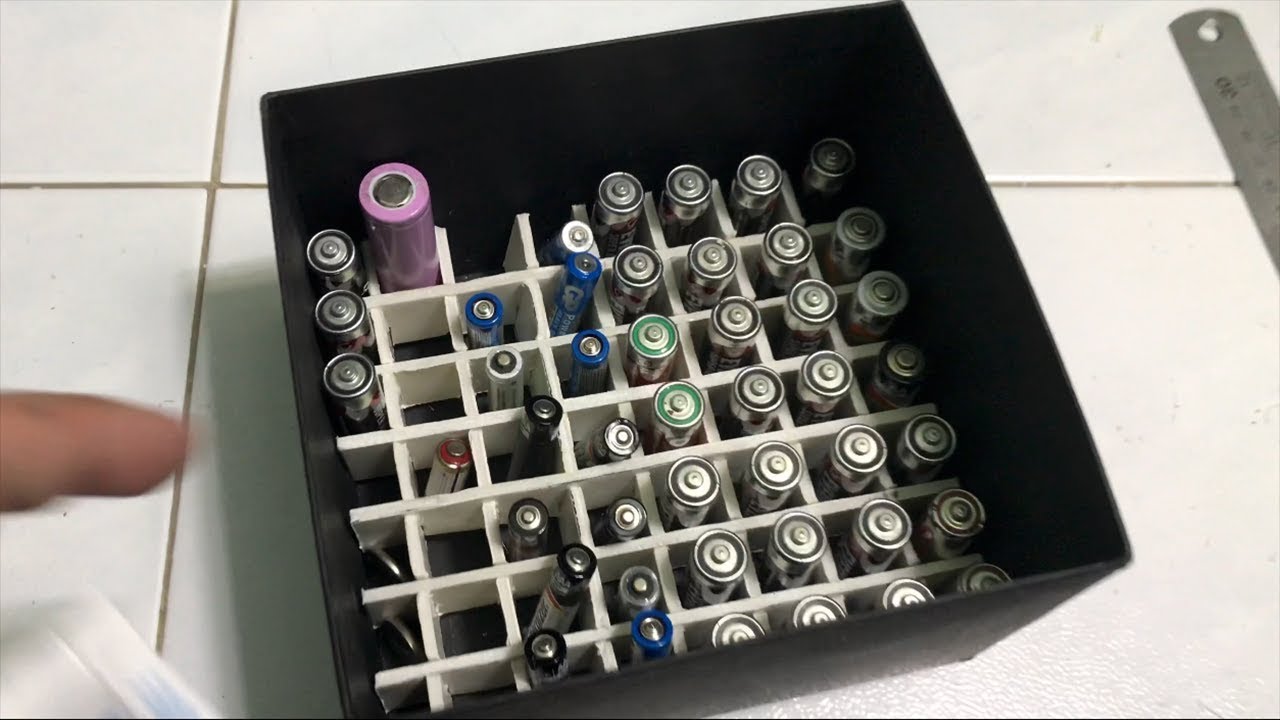18650 Battery Storage: Complete Safety & Performance Guide
When it comes to 18650 battery storage, most people get it completely wrong.
And the results can be disastrous.
I’m talking about shortened battery life, capacity loss, and in worst-case scenarios, fires or explosions.
The good news?
Proper 18650 battery storage isn’t rocket science. But there are specific rules you need to follow to keep your batteries safe and performing at their best.
Today, as a professional Fabricant d'accumulateurs 18650, I’m going to show you exactly how to store 18650 batteries the right way.

Why Proper Storage Matters More Than You Think
Here’s the thing:
18650 batteries aren’t like the AA batteries you throw in a drawer and forget about.
These lithium-ion powerhouses pack serious energy density. And when they’re mishandled during storage, bad things happen.
For example, storing a 18650 battery at the wrong temperature can reduce its capacity by up to 20% in just one year.
That’s like throwing money in the trash.
But capacity loss is just the beginning. Poor storage practices can lead to:
-
Physical damage that makes batteries unusable
-
Dangerous thermal runaway events
-
Fire hazards that put your property at risk
-
Complete battery failure
Bottom line? The way you store your 18650 batteries directly impacts their performance, lifespan, and safety.
The Science Behind Lithium-Ion Battery Storage
Before we dive into specific storage techniques, you need to understand what’s happening inside your batteries.
18650 batteries use lithium-ion chemistry, which is sensitive to three main factors:
Température
High temperatures accelerate chemical reactions inside the battery. This speeds up degradation and reduces capacity over time.
Cold temperatures slow down these reactions. But extreme cold can temporarily reduce performance.
Charge Level
Storing batteries at 100% charge puts stress on the lithium-ion cells. This accelerates aging.
But letting them discharge completely can cause deep discharge damage that makes batteries unusable.
Physical Stress
Dropping, crushing, or puncturing batteries can damage the internal structure. This creates safety hazards and performance issues.
The key is finding the sweet spot for all three factors.
Temperature: The #1 Storage Factor
Temperature control is absolutely critical for proper storage.
Here’s what the research shows:
Optimal Temperature Range
Store your batteries between 50°F and 77°F (10°C to 25°C). This range minimizes degradation while maintaining performance.
Maximum Safe Temperature
Never exceed 140°F (60°C). High heat dramatically accelerates capacity loss and can trigger thermal runaway.
Cold Storage Considerations
Temperatures below 32°F (0°C) won’t cause permanent damage. But they can temporarily reduce performance until the battery warms up.
Real-World Example
Let’s say you store two identical batteries for one year:
-
Battery A: Stored at 68°F (20°C) → Loses about 1.6% capacity
-
Battery B: Stored at 122°F (50°C) → Loses about 4% capacity
That’s a 2.5x difference in degradation rate.
The lesson? Keep your batteries cool, but not frozen.
Charge Level: Finding the Sweet Spot
Most people store their batteries either fully charged or completely dead.
Both approaches are wrong.
The 40-60% Rule
Store your batteries at 40-60% charge (around 3.6V to 3.7V). This minimizes chemical stress while preventing deep discharge.
Why Not 100% Charge?
Fully charged batteries (4.2V) experience maximum chemical stress. This accelerates aging and reduces lifespan.
Why Not 0% Charge?
Completely discharged batteries can enter deep discharge state. Once this happens, they may never recover.
Practical Storage Tip
Use a multimeter to check voltage before storage. If your battery reads below 3.2V, charge it immediately. If it’s above 4.0V, use it in a device until it drops to the optimal range.
Storage Containers: Safety First
The wrong storage container can turn your batteries into fire hazards.
Non-Conductive Materials Only
Always use plastic or silicone cases. Metal containers can cause short circuits if batteries shift around.
Individual Compartments
Each battery should have its own slot. This prevents terminal contact between batteries.
Secure Closures
Look for cases with snap-lock lids or screw caps. You don’t want batteries bouncing around loose.
Fire-Resistant Options
For large collections, consider fire-resistant storage containers. They won’t prevent all fires, but they can contain them.
Battery Safety Protocols
Proper storage goes beyond just temperature and containers.
Terminal Protection
Cover battery terminals with insulating material or use dedicated battery cases. Even a small piece of electrical tape can prevent shorts.
Regular Inspections
Check your stored batteries every 3-6 months. Look for:
-
Swelling or bulging
-
Leakage or corrosion
-
Damaged wrapping
-
Unusual odors
Damaged Battery Protocol
If you find a damaged battery, remove it immediately. Don’t try to charge or use it. Take it to a proper recycling center for safe disposal.
Long-Term vs. Short-Term Storage Strategies
Your storage approach should match your timeline.
Short-Term Storage (Days to Weeks)
For brief storage periods:
-
Maintain 40-60% charge
-
Store in cool, dry place
-
Use basic plastic cases
-
Minimal monitoring required
Long-Term Storage (Months to Years)
Extended storage requires more attention:
-
Check charge levels every 3 months
-
Recharge to 50% if voltage drops below 3.5V
-
Perform capacity testing annually
-
Document storage conditions
Professional Storage
For large collections or critical applications:
-
Use temperature-controlled environments
-
Implement fire detection systems
-
Maintain detailed storage logs
-
Follow industry safety standards
Common Storage Mistakes (And How to Avoid Them)
After analyzing hundreds of battery storage fails, these mistakes come up again and again:
Mistake #1: Storing Loose Batteries
Never throw batteries in a drawer or bag with other items. Keys, coins, or tools can cause shorts.
Mistake #2: Mixed Battery Types
Don’t store old and new batteries together. Different charge levels and ages can cause imbalances.
Mistake #3: Ignoring Environment
Attics, cars, and basements often have extreme temperatures. Choose stable indoor locations.
Mistake #4: Set-and-Forget Mentality
Even properly stored batteries need periodic maintenance. Set calendar reminders to check them.
Maintenance During Storage
Storage isn’t a “set it and forget it” process.
Voltage Monitoring
Check battery voltage every 3-6 months using a multimeter. If voltage drops below 3.2V, recharge immediately.
Capacity Testing
Once per year, perform a full charge-discharge cycle to maintain battery health and measure capacity.
Cleaning and Inspection
Clean terminals with isopropyl alcohol if you notice any corrosion. Replace damaged battery wraps.
Fire Safety Considerations
Lithium-ion batteries can ignite under certain conditions.
Prevention Strategies
-
Store away from heat sources
-
Use fire-resistant containers for large collections
-
Install smoke detectors in storage areas
-
Keep Class D fire extinguishers nearby
Emergency Procedures
If a battery starts smoking or swelling:
-
Move it to a safe, open area immediately
-
Never use water on lithium fires
-
Call fire department for large incidents
-
Ventilate the area to clear toxic gases
Bulk Storage Best Practices
Managing dozens or hundreds of batteries requires systematic approaches.
Organization Systems
-
Label batteries with storage date and capacity
-
Use rack systems for easy access
-
Separate batteries by age and condition
-
Maintain inventory spreadsheets
Rotation Schedules
Implement first-in, first-out rotation to ensure even usage. This prevents some batteries from sitting too long.
Environmental Controls
For large collections:
-
Use dehumidifiers in humid climates
-
Install temperature monitoring systems
-
Ensure adequate ventilation
-
Implement access controls
Special Considerations for Different Applications
Different uses require different storage approaches.
Flashlight Batteries
Store spares at 50% charge in dedicated cases. Check every 6 months and rotate stock regularly.
Power Tool Batteries
Professional contractors should maintain detailed logs and implement rotation schedules to maximize tool uptime.
Emergency Backup Systems
Critical backup batteries need monthly testing and should be stored in temperature-controlled environments.
Extending Battery Life Through Proper Storage
Smart storage practices can double or triple battery lifespan.
Temperature Optimization
Storing at 68°F instead of 86°F can extend lifespan by 50% or more.
Charge Management
Maintaining optimal charge levels reduces chemical stress and preserves capacity.
Physical Protection
Preventing drops and impacts maintains internal structure integrity.
Regular Maintenance
Periodic cycling and cleaning prevents degradation and identifies problems early.
The Bottom Line on 18650 Battery Storage
Proper 18650 battery storage isn’t complicated, but it requires attention to detail.
Remember these key points:
-
Store at 40-60% charge in cool, dry environments
-
Use non-conductive containers with individual compartments
-
Monitor batteries regularly and maintain proper voltage levels
-
Implement safety protocols to prevent fires and accidents
Follow these guidelines, and your batteries will deliver reliable performance for years to come.
The investment in proper storage pays off through extended battery life, improved safety, and peace of mind.
And when you consider that quality 18650 batteries can cost $10-20 each, proper storage quickly pays for itself through reduced replacement costs.
Take the time to implement these 18650 battery storage practices. Your batteries (and your wallet) will thank you.








